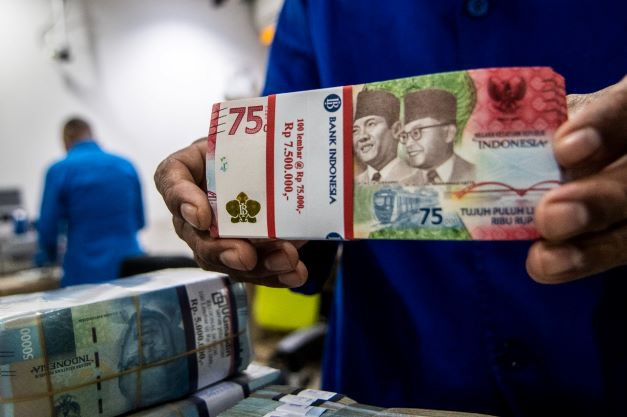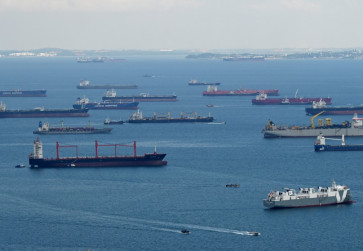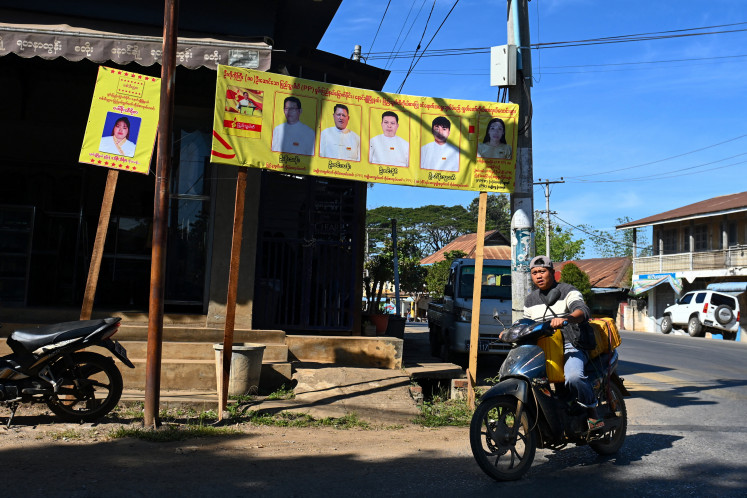Popular Reads
Top Results
Can't find what you're looking for?
View all search resultsPopular Reads
Top Results
Can't find what you're looking for?
View all search resultsBanks are flush with cash, but who will take the loans?
Banking liquidity in Indonesia is abundant, but without market certainty the funds risk staying idle
Change text size
Gift Premium Articles
to Anyone
B
anking liquidity in Indonesia is abundant, but without market certainty the funds risk staying idle. Lending must focus on productive sectors to drive growth rather than fuel inflation.
Finance Minister Purbaya Yudha Sadewa has injected Rp 200 trillion (US$12 billion) from the government’s budget surplus (SAL) into the banking system. Bank Mandiri, BNI and BRI each received Rp 55 trillion, BTN received Rp 25 trillion and Bank Syariah Indonesia (BSI) received Rp 10 trillion. The policy aims to strengthen banking liquidity in Indonesia and push credit distribution to stimulate the economy.
Yet this raises a fundamental question: are banks truly ready to channel such massive funds into lending when the economy remains sluggish?
By fundamentals, banking liquidity in Indonesia remains solid. The loan-to-deposit ratio (LDR) in June 2025 stood at 87.54 percent, a healthy level that signals stable liquidity conditions (Financial Services Authority [OJK] banking statistics, calculated by author).
However, credit growth tells a different story. Over the past six months, lending expanded by only 0.69 percent, compared with an average of 1.14 percent in previous years. This shows that the bottleneck does not lie in funding supply but in weak demand from businesses and households (OJK banking statistics, calculated by author).
Loan demand depends heavily on market conditions. Statistics Indonesia (BPS) recorded deflation of 0.08 percent in August, while four of the last six months also posted deflation. Bank Indonesia’s (BI) Retail Sales Survey also showed little sign of recovery. Major sectors remain under pressure. Food and beverages contracted by 0.5 percent, communication equipment fell by 3.5 percent, while fuel and motor vehicles grew by only 1.9 percent, lower than the 2.6 percent in the previous month.
Labor market data point in the same direction. The Manpower Ministry reported 44,000 layoffs, an increase of 32 percent compared with last year. This confirms that the economy is weak. Households are losing purchasing power, while companies prefer to stay conservative, focusing on efficiency rather than expansion. Under such conditions, demand for new financing remains limited even though banking liquidity in Indonesia is ample.
Despite the sluggish market, there are some positive developments from monetary policy. BI recently cut its benchmark interest rate by 25 basis points to 4.75 percent. The Deposit Facility was lowered to 3.75 percent, while the Lending Facility dropped to 5.5 percent. These measures aim to reduce borrowing costs and encourage banks to lend more actively.
Globally, the United States Federal Reserve also cut rates to 4 to 4.25 percent on Sept. 17. Although this decision is dilemmatic, balancing inflation risks against a weakening labor market, it usually has a positive impact on emerging markets. Historically, Fed rate cuts often trigger foreign capital inflows into countries like Indonesia.
The Rp 200 trillion injection should not be directed mainly to consumer spending. If the funds only boost spending, the risk is higher inflation without stronger production capacity. The priority must be productive lending that creates jobs and supports sustainable growth.
Incentives should target labor-intensive sectors such as food and beverages, textiles and agriculture. These sectors generate large multiplier effects through employment and regional economic activity. Supporting them will ensure growth is real and based on productive capacity, not just temporary consumption.
Still, productive lending will only succeed if businesses see clear demand ahead. With weak purchasing power, companies tend to delay expansion and avoid taking new loans. This is why the government must restore market confidence. Well-targeted fiscal incentives, stronger investment governance and clearer regulations will signal that demand is returning. Once market certainty is established, banks will be able to channel credit productively as planned.
The Rp 200 trillion liquidity injection is a bold move. Its success depends on whether the funds truly flow into the real economy or simply remain idle in banks. The global environment is offering opportunities. The Fed’s policy easing could attract foreign capital inflows and strengthen Indonesia’s financial market. But without credible reforms in the real sector, such momentum may quickly fade.
Indonesia now stands at a crossroads. If lending focuses only on consumption, the risk is higher inflation without added production capacity. But if credit is directed to productive sectors, supported by stronger market certainty, the funds can become fuel for long-term growth.
The key is close coordination among the government, monetary authorities and businesses. With the right strategy, Indonesia’s abundant banking liquidity can transform idle funds into a real driver of recovery, more than just another headline.
---
The writer is an economic and fiscal policy researcher at The PRAKARSA, an independent research agency. The views expressed are personal.










